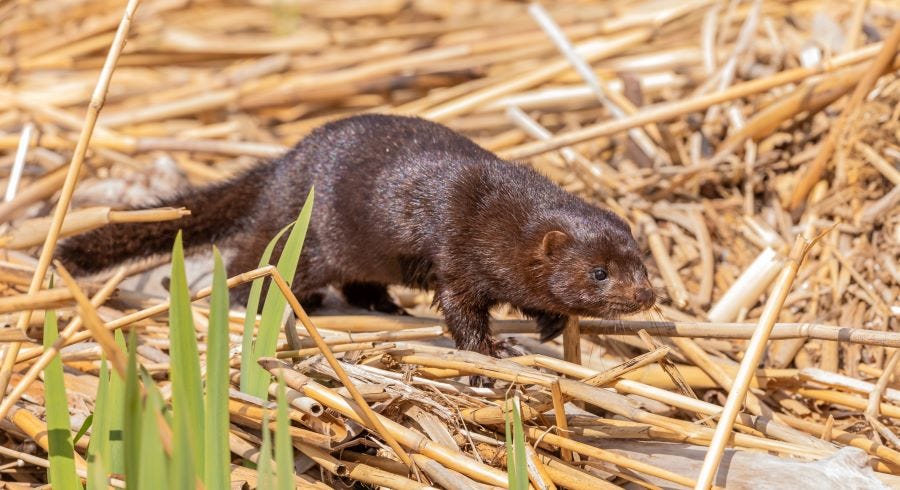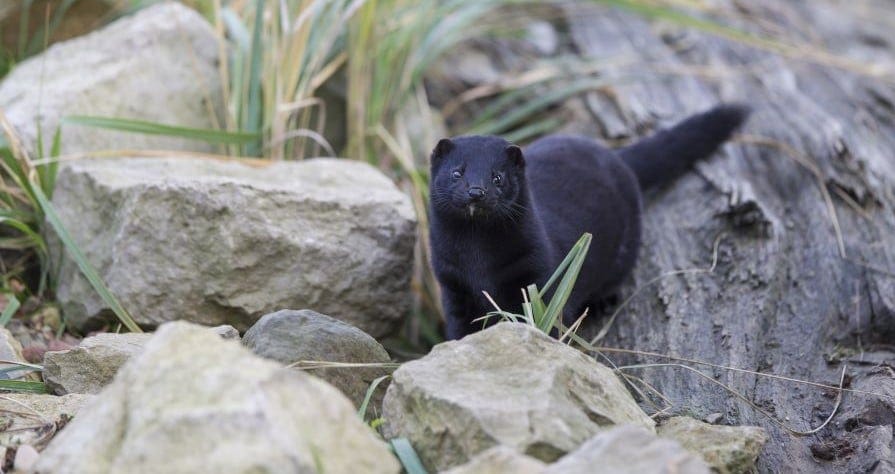What is mink hunting?
Mink Hunting: what is it and what happens on a mink hunt
Mink hunting with hounds only began in an organised way after Otters became a protected species across England and Wales in 1978. Otter hunting has a centuries-long history in the UK but has always been a relatively minor pursuit when compared to deer, fox and hare hunting. The Master of Otterhounds Association was formed in 1910 but became defunct after the species became endangered due to pesticide use in England and Wales after World War Two. Following the ban on otter hunting in 1978 (a ban later formalised by the Wildlife and Countryside Act 1981) some otterhound packs disbanded while others started hunting mink (or claiming to hunt rats). However, the Hunting Act 2004 also made mink hunting illegal. Today there are fewer than ten minkhound packs registered with the organisation Masters of Minkhounds Association, all of which are in England and Wales. Nonetheless, they are active and hunt saboteurs continue to target them.
THE AMERICAN MINK
Mink aren’t native to the UK. They established feral populations in the 1950s after they were released from fur farms. Human conservationists consider the American Mink an ‘invasive’ species because of its predatory behaviour and displacement of native species including water voles and ground-nesting seabirds. They live an amphibious life along waterways by occupying existing cavities within 10 metres of streams and rivers for their dens. These may include rabbit burrows, tree roots and brush. As a result, they provided hunters with an ideal alternative to the otter at the end of the 1970s. Mink have a small territorial range in the UK of up to three kilometres, contrasting drastically with the otter whose home range can be 20 kilometres or more. Their primary form of defence, like most animals, is to flee predators. Like foxes they will go to ground inside holes in order to escape. Unlike foxes, because mink are adept climbers, they will also seek safety in trees if necessary. They can also swim underwater for up to 35 metres. If a mink is backed into a corner, it will use its claws and teeth to fight back. Female mink breed during February and March and will have dependent offspring until early summer. Matured mink will leave their birth den to find their own territories during late summer through to November.

MINK HUNTING: a summer sport
Mink hunting is a ‘summer sport’ conducted between March and September when other forms of hunting have their off-season. As noted above, the early part of this season coincides with mothers nursing their young. Mink hunting has no cub hunting equivalent but kits nonetheless suffer from hunting as they will starve if their mother is killed. Its development out of otter hunting means they two share many traits. Minkhound packs today mostly consist of foxhounds that have been retired from fox hunting, although some may have occasional otterhounds mixed into the pack. The apparent sole exception to this is the Pembrokeshire and Carmarthenshire Minkhounds, which has retained a full pack of otterhounds since the 1970s. When out in the field, the pack will consist of roughly eight to ten couple (16 to 20 hounds) and are hunted on foot. The process of hunting is relatively straight forwards. The hounds will attempt to pick up the trail of a mink along the banks while the hunt and its followers will make noise in order to scare the mink out of its holes. Terriermen may accompany the hunt, with their terriers joining the pack of hounds in exploring holes along the bank. If a mink is flushed from hiding then, as in other forms of hunting, the huntsman will blow his horn for the chase. The hounds will then pursue the mink along the river bank and through the water. If the mink goes to ground in a hole or amongst roots then terriers will again be deployed to flush it out. If the mink takes refuge up a tree then the hunt and its followers will try to knock the mink from the tree using poles or even by throwing objects. Mike Huskisson even claims on his website that in “extreme cases [the hunt] would take a chainsaw to the tree and try to cut it down”. If the mink is caught it will first attempt to fight back. However, its small stature – and human intervention – means it is unlikely to win. Due to mink having small home ranges that they’ll try not to leave, a single chase is unlikely to last very long. As a result, a hunt may kill multiple mink during a single meet. The hunt will include a huntsman and whippers-in, all of which carry the usual equipment of a hunt. There are a couple of differences though. The most distinctive is that most of the hunt and many of its followers carry so-called ‘otterpoles’, a carryover from the days of otter hunting. These poles have multiple functions including as a walking stick, for beating the ground to flush out mink, and to knock mink from trees. Owners of otterpoles would also notch them, with each notch representing a kill that they had witnessed. Meanwhile, the other notable difference is that the hunt appears more informal in their dress. While some hunts retain the waistcoats and long socks with garters of other foot hunts such as beagle packs, they may just wear a shirt and jeans as seen with the Pembrokeshire and Carmarthenshire Minkhounds. Followers are similarly informally dressed. In recent seasons, some sabs have claimed that their local minkhound packs are now hunting otters. Devon County Hunt Saboteurs published footage of what it said is the Culmstock Hunt hounds on an otter in 2019. This may be a result of increasing otter numbers and a concurrent decline in the mink population.

SABBING THE HUNT: first, find the hunt
The most difficult part of sabbing a mink hunt is finding the hunters in the first place, Tip-offs are less likely due to the areas that the hunt covers (rural waterways), and the lack of horseboxes means a meet may just look like a handful of cars parked up at the side of the road. If sabs find a mink hunt then, as with beagling, it is likely the hunt will simply pack up as they're unable to outrun them. Should the hunt continue, though, then sabs will aim to have one group with the hounds in order to try and control them while a second group is further upstream in order to flush any mink out well ahead of the hounds. To do this they can make noise and beat the ground, much as the hunt and its followers do. If the mink goes to ground then, as with a fox going to ground, sabs will attempt to block the hole in which the mink has gone.
There are minkhound packs across the country, with many sab and some monitor groups tackling them. If you see mink (or otter) hunting taking place please report the location (we suggest using What3Words: the app also allows you to take photographs which will be dropped onto a map with the three words for the exact site provided).
If you'd like to help tackle mink hunting please find your local sabs or monitor group.



